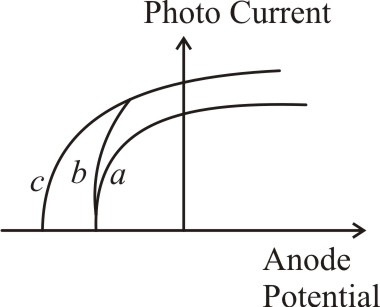A radioactive nucleus of mass M emits a photon of frequency and the nucleus will recoil. The recoil energy will be
1.
2. zero
3.
4.

To unlock all the explanations of 6 chapters you need to be enrolled in MasterClass Course.

To unlock all the explanations of 6 chapters you need to be enrolled in MasterClass Course.
1. \(1.3\) V
2. \(0.5\) V
3. \(2.3\) V
4. \(1.8\) V

To unlock all the explanations of 6 chapters you need to be enrolled in MasterClass Course.

To unlock all the explanations of 6 chapters you need to be enrolled in MasterClass Course.
1. 1:2
2. 1:1
3. 1:5
4. 1:4

To unlock all the explanations of 6 chapters you need to be enrolled in MasterClass Course.

To unlock all the explanations of 6 chapters you need to be enrolled in MasterClass Course.
| 1. | decrease by \(2\) times |
| 2. | decrease by \(4\) times |
| 3. | increase by \(4\) times |
| 4. | increase by \(2\) times |

To unlock all the explanations of 6 chapters you need to be enrolled in MasterClass Course.

To unlock all the explanations of 6 chapters you need to be enrolled in MasterClass Course.
| 1. | \(1.00\) | 2. | \(1.02\) |
| 3. | \(1.04\) | 4. | \(0.98\) |

To unlock all the explanations of 6 chapters you need to be enrolled in MasterClass Course.

To unlock all the explanations of 6 chapters you need to be enrolled in MasterClass Course.
The potential difference that must be applied to stop the fastest photoelectrons emitted by a nickel surface, having work function 5.01 eV, when ultraviolet light of 200 nm falls on it, must be
1. 2.4 V
2. -1.2 V
3. -2.4 V
4. 1.2 V

To unlock all the explanations of 6 chapters you need to be enrolled in MasterClass Course.

To unlock all the explanations of 6 chapters you need to be enrolled in MasterClass Course.
2. 3 X 1016
3. 9 x 1015
4. 3 X 1019

To unlock all the explanations of 6 chapters you need to be enrolled in MasterClass Course.

To unlock all the explanations of 6 chapters you need to be enrolled in MasterClass Course.

2. Curves a and b represent incident radiations of the same frequency but of different intensities
3. Curves b and c represent incident radiations of different frequencies and different intensities
4. Curves b and c represent incident radiations of same frequency having the same intensity

To unlock all the explanations of 6 chapters you need to be enrolled in MasterClass Course.

To unlock all the explanations of 6 chapters you need to be enrolled in MasterClass Course.
2. threshold frequency (0)
3. intensity of light
4. frequency of light ()

To unlock all the explanations of 6 chapters you need to be enrolled in MasterClass Course.

To unlock all the explanations of 6 chapters you need to be enrolled in MasterClass Course.
1. ultraviolet region
2. visible region
3. infrared region
4. X-ray region

To unlock all the explanations of 6 chapters you need to be enrolled in MasterClass Course.

To unlock all the explanations of 6 chapters you need to be enrolled in MasterClass Course.






